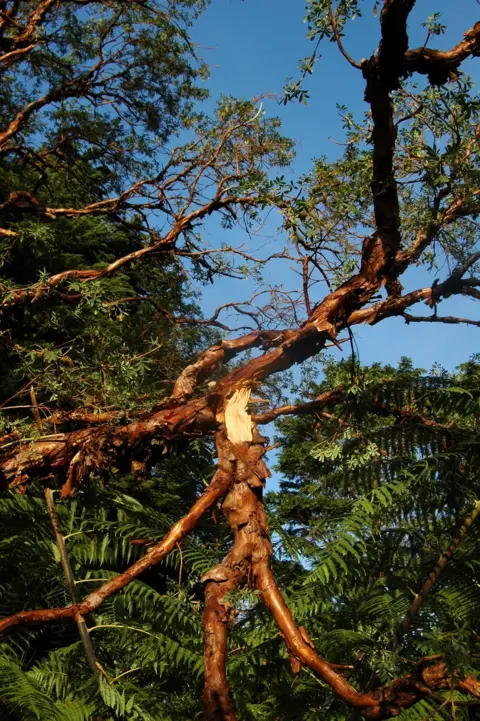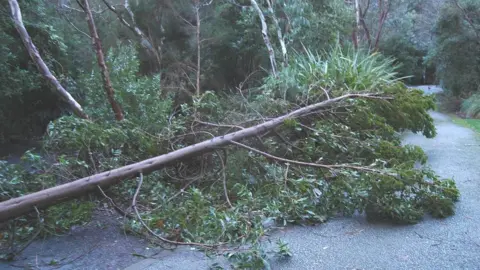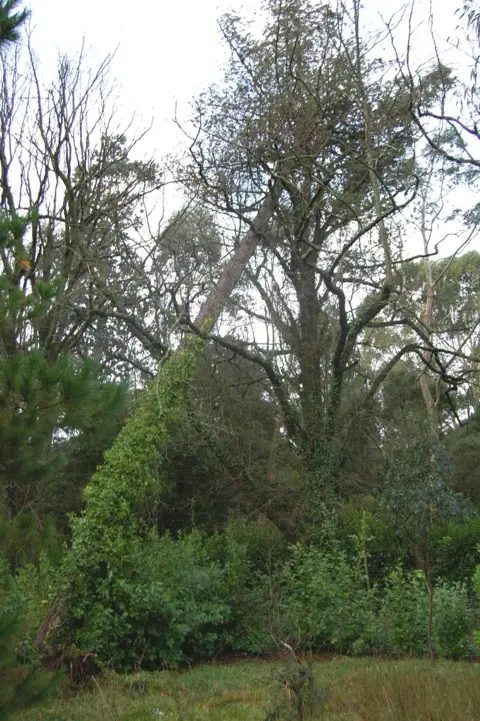Logan Botanic Garden counts cost of Storm Barra damage
 RBGE
RBGEA botanic garden in south west Scotland is counting the cost of the damage caused by Storm Barra.
Curator Richard Baines said the destruction at the Port Logan site was "heart-breaking".
Logan Botanic Garden was in one of the areas worst affected by the storm on Tuesday, with wind gusts of more than 75mph (120kmh).
Mr Baines said it had caused damage to "countless plants" as well as the destruction of "several prized trees".
Logan, situated in Dumfries and Galloway, is a regional garden of the Royal Botanic Garden Edinburgh (RGBE).
Among the trees damaged by the storm was one of the garden's best-known attractions, Polylepsis australis - known locally as the "filo pastry tree" because of its peeling bark.
The tree, runner-up in the 2018 Scottish Tree of the Year contest, had two large boughs torn from its trunk.
Experts said it would survive but had "lost its majestic stature".
 RBGE
RBGEMr Baines said the damage had highlighted, with a "ferocious roar", the impact of climate change.
"This is the fiercest storm I have experienced in my 15 years as curator of the garden and it's heart-breaking to witness the damage and destruction of so many important trees," he said.
"It's another clear example of the impact of climate change on our natural environment and why the work of RGBE in researching and helping to conserve biodiversity is so crucial."
The garden is home to 120 species that are threatened with extinction out of about 2,500 species in total.
It usually enjoys an "almost subtropical climate" allowing plants to flourish which would not survive elsewhere.
However, the wind direction and strength of Storm Barra caused significant damage, despite hedges which had been planted for protection.
 RBGE
RBGESeveral eucalypts, wild-collected in Tasmania, were destroyed as were specimens of the critically-endangered Araucaria angustifolia (Brazilian pine), Acacia (florist's mimosa) and Callitris (cypress).
RBGE said these were trees which thrived at Logan but were hardly grown outside anywhere else in Scotland.
Scotland's national collection of Leptospermum scoparium or tea tree, which is hosted at the garden, was also affected with several trees blown out of the ground by the winds.
It has been estimated it will take about three weeks to clear up the damage and debris from the garden which is scheduled to reopen to the public on 1 March next year.
